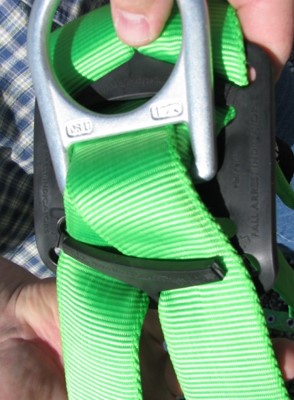
One question which is always asked in our Fall Protection Competent Person classes relates to harnesses and expiration dates. In other words, are we required to take a harness out of service after a specific amount of time?
You have probably heard it too. Invariably someone will state that a harness has to be removed from service and destroyed after five years of use. I have heard of inspectors cutting up harnesses on the spot if they were older than five years.
The short answer to this question is, "No." There is no blanket requirement from OSHA, ANSI or the manufacturers that states harnesses need to be destroyed on the fifth anniversary of their in-service date.
If you want proof, go look in your harnesses user's manual. For example, DBI-SALA states: "The functional life of DBI-SALA harnesses is determined by the work conditions and maintenance. As long as the product passes inspection criteria, it may remain in service."
So where did the five year myth come from?
ANSI has two standards that address fall protection. The ANSI Z359 family of standards and the A10 standards. A10 addresses construction and demolition and one of the requirement listed in an older A10 standard was that unless the manufacturer specifies otherwise, harnesses should be removed from service after five years. Z359 (which is intended to apply to both general industry and construction going forward) does not include that language.
The most important aspect of a fall protection harness or any piece of fall protection equipment is whether or not that equipment will perform as designed in a fall. On most construction sites, harnesses which are worn everyday are not going to last two years, much less five. In other situations, harnesses that are lightly used and have been properly stored can remain in service for a long time.
Keep in mind, there are many reasons for retiring older harnesses. Newer harnesses are better than older ones because they usually have extra padding, more ergonomic designs, pockets and tool loops, and easier adjustments among other benefits. In addition, providing workers with higher-quality protective equipment sends a signal that the organization takes safety seriously, so the workers should as well.
So don't worry if your faithful harness has survived five or more years on the job. Don't forget that the seat belts in most cars are well over five years old and I have never heard of one failing in an accident (unless it wasn't being worn!)